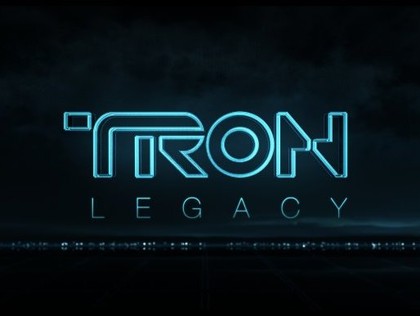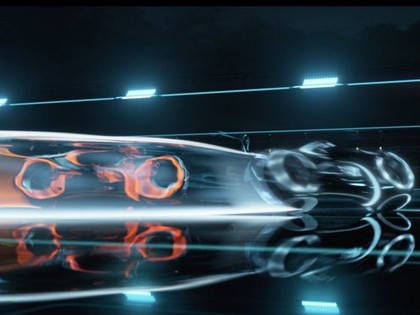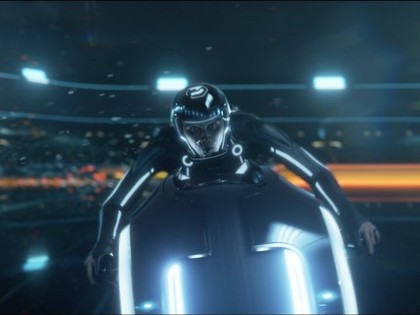The technology of Tron: Legacy
The big breakthrough, says Kosinski, was that Bridges could wear the HMC (Helmet Mounted Camera) on set, interacting with others in each scene.
"That was the big improvement we made (over Benjamin Button)," says Kosinski. "Previously, it would have to been done after the fact, in another setting. It was really exciting to see Jeff playing CLU on set with Michael Sheen. When I saw that all coming together, I got pretty excited."
The look of Tron legacy
Production designer Darren Gilford says the idea was always for Tron Legacy to stay true to the spirit of the original movie. "The first film had an iconic look which was basically created by a limitation of what they could do with computers in the Eighties.
It was very geometric, very simplistic. With the technology we have now, it's limitless what we can do." But rather than change the Atari aesthetic of the original, Gilford and his team simply softened some of the shapes.
"We definitely tried to maintain those basic Tron geometric shapes," he says.

On your bike
Sign up for breaking news, reviews, opinion, top tech deals, and more.
Futuristic vehicles have long been a key part of the Tron mythology - and none are more iconic than the Lightcycles. The vehicles return for the sequel, of course, only this time the bikes have been pimped and their manoeuvring skills have been improved.
One highlight of the film features a duel between ten Lightcycles on a multi-level grid. With dazzling high-speed choreography it's a challenge to keep up with the action, made all the more spellbinding by the film's 3D presentation.
The man charged with evolving these wheels is Daniel Simon, who joined the Tron Legacy team in 2008. "I was working on my on car designs, doing some work for Bugati in Berlin, when I received an email from director Joe Kosinski," he tells Tech Radar when we catch up with him on the London Junket. "I thought: how the hell did he find my email address?"

Simon says that the key to the designing fantasy tech like the Lightcycles is to keep them grounded in reality. "You can't go crazy because then it becomes too surreal. If you look back at the first movie, that's what happened," he says.
"Tron was so ahead of its time, so quirky and surreal, that many people could not connect to it. Sure it foresaw the future, the internet and everything, but we wanted to create a piece of mainstream entertainment with Legacy. We had a lot of crazy ideas, but we ditched many of them to be more realistic."
Simon adds that he pushed new vehicle concepts as far "as I could, then snapped back and found ground somewhere in the middle. It doesn't make sense to create the weirdest looking hyper bikes, that are half virtual and half floating because then people cannot relate to them.
Right now, little boys dream of a lightcycle because they can see themselves thundering off on one after school."

"It's kind of dangerous to be too visionary," he adds. "If it's too hardcore, the technology takes away from the spirit and the action. So we are a little bit more lightweight on this one. However, we think the designs will stand the test of time. We hope people don't look back and say, that movie was soooo 2010."

Steve has been writing about AV and home cinema since the dawn of time, or more accurately, since the glory days of VHS and Betamax. He has strong opinions on the latest TV technology, Hi-Fi and Blu-ray/media players, and likes nothing better than to crank up his ludicrously powerful home theatre system to binge-watch TV shows.